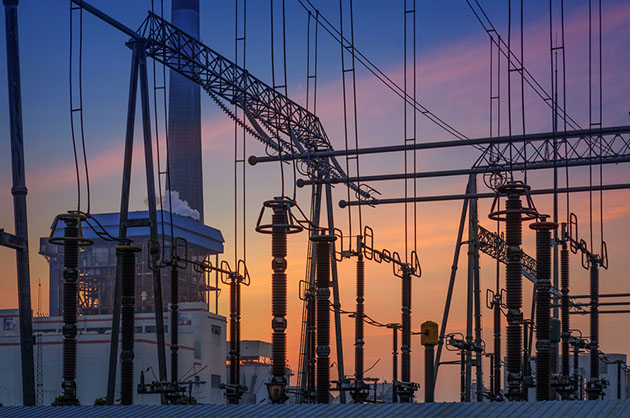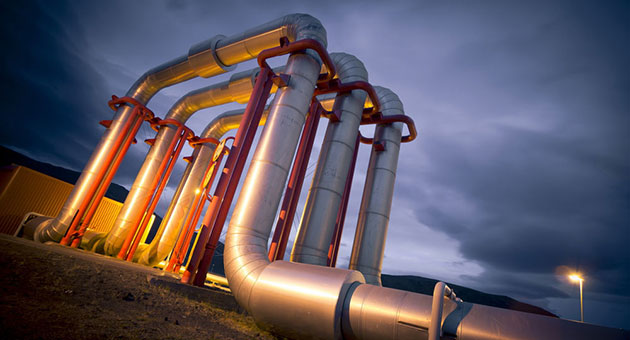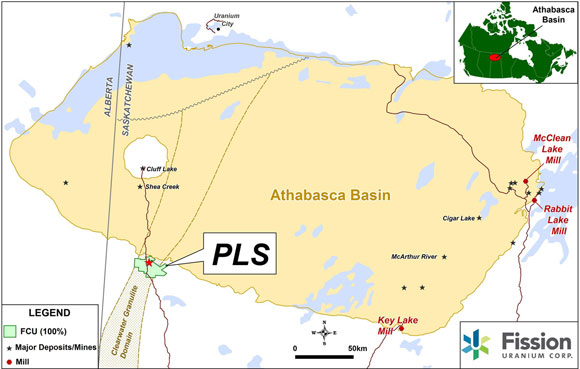TICKERS: , , BWP, CHKAQ, COP, DCP, DPM, EP, EPB, ENB, EPD, KMP, MMP, OKS, SWN, SEP, SXL, , WES
MLPs—Wall Street's Best-Kept Secret: Yves Siegel
Interview
Source: George S. Mack of The Energy Report (2/7/12)
 Despite depressed natural gas prices, investors in master limited partnerships (MLPs) leveraged to natural gas liquids can expect both excellent income and share price appreciation, says Credit Suisse Senior Analyst Yves Siegel. In this exclusive interview with The Energy Report, Siegel discusses his favorite MLPs and their winning formula for double-digit returns.
Despite depressed natural gas prices, investors in master limited partnerships (MLPs) leveraged to natural gas liquids can expect both excellent income and share price appreciation, says Credit Suisse Senior Analyst Yves Siegel. In this exclusive interview with The Energy Report, Siegel discusses his favorite MLPs and their winning formula for double-digit returns.
The Energy Report: Yves, what can investors expect out of MLPs between now and the end of 2013?
Yves Siegel: Steady as she goes. The yields for our group now are around 6%, and we expect distribution growth to be about 7%. If Fed Chairman Ben Bernanke is true to his word, we'll continue to expect an environment of low interest rates for the next two years. So if you combine the yield and the distribution growth, we think investors could see low double-digit returns.
TER: How do distributions grow?
YS: When contracts roll over on terminal assets, they typically roll over at higher rates because they're competing with new facilities. In order for companies to get a return on their facilities, they need a certain price. Storage at Cushing, Oklahoma, for example, is relatively expensive to build. When contracts roll over for those existing storage assets, typically those rates can move up to the prevailing rate for new construction. Distribution growth results not only from contract rollover but largely from new builds and investments that come online, either through greenfield projects or through acquisitions. The MLPs as a group have been able to grow distributions by investing capital in excess of the cost of capital. That's been a winning formula for quite some time.
TER: Do you see real estate partnership investors shifting their attention to energy MLPs?
YS: I would suggest that retail investors who are searching for yield and invested in real estate investment trusts (REITs) are now looking at MLPs. I would also include investors who have historically invested in utilities. I think MLPs have been around long enough now that investors are feeling more comfortable with investing in the security.
TER: Returns on your MLPs coverage universe have been excellent in recent months, some experiencing double-digital total returns. With more demand and buying, do you expect yields to grow in addition to distributions?
YS: No; I think yields will compress. The current average yield is around 6%. I wouldn't be surprised to see that reduced to 5.5%, the rationale being that stock prices move higher once the market sees healthy returns. Demand for income-oriented securities remains pretty robust. In a low interest rate environment, people continue to look for places where they can safely park cash as opposed to keeping it under their mattresses. I expect a combination of increased distributions and continued higher stock prices. The result would probably be net-net compressed yields.
TER: Do you expect to see initial public offerings (IPOs) for these types of MLPs this year?
YS: Yes, I expect to see new MLPs come to the market.
TER: Everything you've covered suggests good health in this sector. What is your investment thesis right now?
YS: The themes have been threefold: One, invest in MLPs that are well situated to participate in burgeoning shale plays, because as producers pursue these plays, they need the infrastructure to support further production.
Two, we think natural gas liquids (NGL) fundamentals are strong and will remain strong for the foreseeable future because NGL prices correlate with crude oil prices. NGLs are a byproduct of a natural gas production, and current low prices for natural gas are part of the cost of producing NGL. But crude oil prices are high, and that determines the revenue stream NGLs will produce. This all speaks to a very favorable margin opportunity. We would suggest that MLPs that have exposure to NGL fundamentals should continue to do well.
Three, we like this notion that MLPs can buy assets from their sponsors at attractive valuations that enable them to grow distributions. These dropdown stories will continue to perform well over the next couple years.
TER: Are extraction products from natural gas the most profitable part of natural gas production?
YS: Yes. As we speak, natural gas prices have fallen below $2.50/thousand cubic feet (Mcf). Natural gas is very depressed, but what's keeping the economics favorable is the fact that some of these plays, such as the Marcellus shale play, produce NGLs along with the gas. The NGLs triple the actual realization on the commodity because of the liquids content. So that is a very, very powerful thematic right now.
TER: What are your preferred standards for MLP growth and income?
YS: Our approach focuses more on total return. Simplistically, an investor can buy a stock that's yielding 8% but has 3–4% distribution growth, and he or she would probably have an 11–12% return. Conversely, an investor could buy a stock that's yielding 5% and is growing 7–8%, and wind up with a 12–13% total return. Balancing total return with calibrated risk is the right approach. Don't try to capture total return and take undue risk. Overall, the market pays for growth.
MLPs with more growth typically have much lower yields, so it's not inconsistent for us to recommend Western Gas Partners, L.P. (WES:NYSE), for example, which is yielding below 5% but which we think will have double-digit distribution growth over the next couple of years. At the same time, we could recommend Boardwalk Pipeline Partners, L.P. (BWP:NYSE), which is yielding around 8% and is going to have much more modest distribution growth of 3–4%.
TER: Let's segue into your top MLP picks.
YS: Well, what we like about Boardwalk Pipeline Partners is that it has a very steady revenue stream tied to its interstate pipelines. With new management in place, we think 2011 was perhaps an inflection point for the company to try to focus more on growth. It has done so by buying storage assets from Enterprise Products Partners, L.P. (EPD:NYSE) and signing a gathering agreement with Southwestern Energy Co. (SWN:NYSE) in the Marcellus. We think there is an opportunity to accelerate the growth in distributions if management is successful. If management falls short of that goal, I think investors would still be happy with the safety of the yield.
The other company that's within that interstate pipeline business model is El Paso Pipeline Partners, L.P. (EPB:NYSE). That stock came under a little pressure when Kinder Morgan Energy Partners, L.P. (KMP:NYSE) announced that it was buying El Paso Corporation (EP:NYSE) last year. I think El Paso Pipeline Partners was unduly punished because investors felt the distribution growth would slow. It is going to slow, because instead of having all of El Paso's pipeline assets migrate into the MLP, now some of those assets will be migrating into Kinder Morgan. It's almost a truism that the growth at El Paso Pipeline Partners is not going to be as robust because those pipelines will be moving into a different entity. However, we still think El Paso Pipeline Partners will be able to grow its distributions at 9%, and in fact, Kinder suggested as much. So we think a 5.5% yield and 9% distribution growth over the next couple of years is a good formula for success and a good formula for total return potential.
When you think about the other theme we spoke about, the strength of the NGLs, Targa Resources Partners, L.P. (NGLS:NYSE) fits into that. We like Targa because of the investment opportunities, the integrated model it's pursuing within its midstream business and its very good management team.
We also like DCP Midstream Partners, L.P. (DPM:NYSE), which is another NGL story, but it's also a dropdown story. There is the MLP, DCP Midstream Partners, and its sponsor, DCP Midstream LLC (DPM:NYSE), which is 50% owned by Spectra Energy Corp. (SE:NYSE) and 50% owned by ConocoPhillips (COP:NYSE). DCP Midstream Partners will continue to see assets migrate to it from DCP Midstream, helping to finance its growth while it pursues its own organic growth.
Then, within the dropdown stories and also in the midstream space, it's hard not to mention Chesapeake Midstream Partners, L.P. (CHKM:NYSE) and Western Gas Partners, which I mentioned earlier. Both of these MLPs are owned by exploration and production (E&P) companies—Chesapeake Energy Corp. (CHK:NYSE) for Chesapeake and Anadarko Petroleum Corp. (APC:NYSE) for Western. The upstream parents are investing millions of dollars on building infrastructure to connect their wells, and the MLPs are helping to finance that via the dropdown. In the case of Western, it is having some good organic growth in the DJ Basin on top of what it can expect to acquire from its parent. We think Western and Chesapeake give investors nice, double-digit growth.
For investors who are looking for more safety, or simply more mature MLPs, Enterprise Products Partners LP probably represents the best in class, being the largest MLP and having a vast footprint within the U.S. spanning NGL, crude oil and refined petroleum products. It covers the whole spectrum, and it has an excellent management team. It has an excellent balance sheet and a great formula for 5% steady distribution growth as far as the eye can see. Enterprise is a real core holding and one that we would like to have in any MLP portfolio.
TER: Over the past 52 weeks Enterprise is up 15%, and it's up 2% over the past four weeks. With a $43B market cap, what are its growth prospects?
YS: Well, it is investing $3–4B annually in organic growth projects. Let's not forget that it will cost billions of dollars to build U.S. energy infrastructure that supports shale play development. We think that a majority of that spending is being done by MLPs and Enterprise is a good case in point. That runway is probably pretty long, meaning infrastructure spending should last several years. That bodes well for the MLPs that are investing the capital and should be generating returns that support distribution growth.
It's not only the size of the company that matters, but the ability to execute projects efficiently and cost effectively, using existing assets in some cases that provide leverage. For example, Enterprise will be using some of its existing pipeline and its right-of-way in order to realize its planned ethane line, stretching from the Marcellus to the Gulf Coast. The joint venture crude pipeline that it is doing with Enbridge Energy Partners, L.P. (EEP:NYSE) from Cushing to the Gulf Coast makes use of an existing pipeline there. It is reversing the Seaway pipeline at an extremely reasonable cost, which speaks to your point that there are not many companies out there that have the infrastructure or the entrepreneurial spirit to go after these projects.
TER: Are there any other companies that exhibit this entrepreneurial spirit?
YS: ONEOK Partners, L.P. (OKS:NYSE) has an excellent management team, and it is also a play on the burgeoning NGL market. I would also mention Magellan Midstream Partners, L.P. (MMP:NYSE), which is focused on crude and refined products pipelines.
TER: Both of those companies have had tremendous runs recently; ONEOK is up 39% over the past 52 weeks, while Magellan is up 21% or so.
YS: Both of those stocks have good growth characteristics and excellent management teams, but investors might want to wait for a better entry point before buying. They've certainly had really terrific runs.
Sunoco Logistics Partners, L.P. (SXL:NYSE) is also doing its bit to take advantage of getting ethane out of the Marcellus. It is also helping to de-bottleneck the amount of crude oil that's trapped at Cushing by moving crude production from the Permian Basin down to the Gulf Coast instead of north to Cushing. I put it in the same sort of category, as it has a good management team, strong balance sheet and very good growth prospects. All those good things are reflected in the stock price, so a better entry point might be worth waiting for.
TER: Sunoco Logistics has pulled back a bit over the past four weeks, but not much.
YS: I'd just like to stress the fact that the companies in the MLP class are very transparent because of cash flow. It's a very good pass-through structure for getting cash back to shareholders in a tax-efficient manner.
TER: If you had to pick one of these MLPs as a very favorite, what would it be? Or should investors choose a basket of MLPs?
YS: My thought is that investors are best served by diversifying within a basket of MLPs. I don't think MLPs are mispriced securities, so you're not necessarily going to have outsized returns, nor do I think investors who are looking at the bond and stock markets could really expect outsized returns. For the equity market, if investors could see a 6–8% type of total return, they should be pretty happy.
TER: Yves, we haven't seen any large gains in the price of crude over the past six months, and we have certainly seen the price of gas depressed. If energy commodities began to strengthen, what kind of an effect would that have on these MLPs?
YS: It would affect different sectors in different ways. With the gathering and processing companies, most of the contracts are for a percentage of proceeds. The MLPs do a pretty good job of hedging their commodity risk out one to three years. But in a strong NGL- and crude oil-pricing environment, net-net they would benefit. Low natural gas prices are positive for gas processing margins. However, some intrastate pipelines would see diminished volumes if drilling slows down in dry gas areas. If crude and gasoline prices were to get too high and gasoline prices get too high, refined petroleum product pipelines might experience some negative pushback because of declining volumes in their pipelines.
TER: Thank you for sharing your knowledge and time today.
YS: You bet. Thank you.
Yves Siegel joined the Credit Suisse Energy Research Team in June 2009 to cover the MLP and natural gas pipeline sectors. Immediately prior to joining Credit Suisse, Siegel was a senior portfolio manager at a New York hedge fund focused on MLPs. Prior to his buyside experience, Siegel had established a leading sellside MLP franchise, having spent more than 10 years at Wachovia Securities after prior sellside engagements at Smith Barney and Lehman Brothers. He has received both a BA and an MBA from New York University and is a CFA charterholder.
Want to read more exclusive Energy Report interviews like this? Sign up for our free e-newsletter, and you'll learn when new articles have been published. To see a list of recent interviews with industry analysts and commentators, visit our Exclusive Interviews page.
DISCLOSURE:
1) George Mack of The Energy Report conducted this interview. He personally and/or his family own shares of the following companies mentioned in this interview: None.
2) The following companies mentioned in the interview are sponsors of The Energy Report: Enbridge Energy Partners, L.P. Streetwise Reports does not accept stock in exchange for services.
3) Yves Siegel: I personally and/or my family own shares of the following companies mentioned in this interview: Enterprise Products Partners, L.P. and Kinder Morgan Energy Partners, L.P. Credit Suisse may do banking business with the companies mentioned in this report. I did not receive any payments from the companies mentioned. I was not paid by Streetwise for this interview.
Yves Siegel: Steady as she goes. The yields for our group now are around 6%, and we expect distribution growth to be about 7%. If Fed Chairman Ben Bernanke is true to his word, we'll continue to expect an environment of low interest rates for the next two years. So if you combine the yield and the distribution growth, we think investors could see low double-digit returns.
TER: How do distributions grow?
YS: When contracts roll over on terminal assets, they typically roll over at higher rates because they're competing with new facilities. In order for companies to get a return on their facilities, they need a certain price. Storage at Cushing, Oklahoma, for example, is relatively expensive to build. When contracts roll over for those existing storage assets, typically those rates can move up to the prevailing rate for new construction. Distribution growth results not only from contract rollover but largely from new builds and investments that come online, either through greenfield projects or through acquisitions. The MLPs as a group have been able to grow distributions by investing capital in excess of the cost of capital. That's been a winning formula for quite some time.
TER: Do you see real estate partnership investors shifting their attention to energy MLPs?
YS: I would suggest that retail investors who are searching for yield and invested in real estate investment trusts (REITs) are now looking at MLPs. I would also include investors who have historically invested in utilities. I think MLPs have been around long enough now that investors are feeling more comfortable with investing in the security.
TER: Returns on your MLPs coverage universe have been excellent in recent months, some experiencing double-digital total returns. With more demand and buying, do you expect yields to grow in addition to distributions?
YS: No; I think yields will compress. The current average yield is around 6%. I wouldn't be surprised to see that reduced to 5.5%, the rationale being that stock prices move higher once the market sees healthy returns. Demand for income-oriented securities remains pretty robust. In a low interest rate environment, people continue to look for places where they can safely park cash as opposed to keeping it under their mattresses. I expect a combination of increased distributions and continued higher stock prices. The result would probably be net-net compressed yields.
TER: Do you expect to see initial public offerings (IPOs) for these types of MLPs this year?
YS: Yes, I expect to see new MLPs come to the market.
TER: Everything you've covered suggests good health in this sector. What is your investment thesis right now?
YS: The themes have been threefold: One, invest in MLPs that are well situated to participate in burgeoning shale plays, because as producers pursue these plays, they need the infrastructure to support further production.
Two, we think natural gas liquids (NGL) fundamentals are strong and will remain strong for the foreseeable future because NGL prices correlate with crude oil prices. NGLs are a byproduct of a natural gas production, and current low prices for natural gas are part of the cost of producing NGL. But crude oil prices are high, and that determines the revenue stream NGLs will produce. This all speaks to a very favorable margin opportunity. We would suggest that MLPs that have exposure to NGL fundamentals should continue to do well.
Three, we like this notion that MLPs can buy assets from their sponsors at attractive valuations that enable them to grow distributions. These dropdown stories will continue to perform well over the next couple years.
TER: Are extraction products from natural gas the most profitable part of natural gas production?
YS: Yes. As we speak, natural gas prices have fallen below $2.50/thousand cubic feet (Mcf). Natural gas is very depressed, but what's keeping the economics favorable is the fact that some of these plays, such as the Marcellus shale play, produce NGLs along with the gas. The NGLs triple the actual realization on the commodity because of the liquids content. So that is a very, very powerful thematic right now.
TER: What are your preferred standards for MLP growth and income?
YS: Our approach focuses more on total return. Simplistically, an investor can buy a stock that's yielding 8% but has 3–4% distribution growth, and he or she would probably have an 11–12% return. Conversely, an investor could buy a stock that's yielding 5% and is growing 7–8%, and wind up with a 12–13% total return. Balancing total return with calibrated risk is the right approach. Don't try to capture total return and take undue risk. Overall, the market pays for growth.
MLPs with more growth typically have much lower yields, so it's not inconsistent for us to recommend Western Gas Partners, L.P. (WES:NYSE), for example, which is yielding below 5% but which we think will have double-digit distribution growth over the next couple of years. At the same time, we could recommend Boardwalk Pipeline Partners, L.P. (BWP:NYSE), which is yielding around 8% and is going to have much more modest distribution growth of 3–4%.
TER: Let's segue into your top MLP picks.
YS: Well, what we like about Boardwalk Pipeline Partners is that it has a very steady revenue stream tied to its interstate pipelines. With new management in place, we think 2011 was perhaps an inflection point for the company to try to focus more on growth. It has done so by buying storage assets from Enterprise Products Partners, L.P. (EPD:NYSE) and signing a gathering agreement with Southwestern Energy Co. (SWN:NYSE) in the Marcellus. We think there is an opportunity to accelerate the growth in distributions if management is successful. If management falls short of that goal, I think investors would still be happy with the safety of the yield.
The other company that's within that interstate pipeline business model is El Paso Pipeline Partners, L.P. (EPB:NYSE). That stock came under a little pressure when Kinder Morgan Energy Partners, L.P. (KMP:NYSE) announced that it was buying El Paso Corporation (EP:NYSE) last year. I think El Paso Pipeline Partners was unduly punished because investors felt the distribution growth would slow. It is going to slow, because instead of having all of El Paso's pipeline assets migrate into the MLP, now some of those assets will be migrating into Kinder Morgan. It's almost a truism that the growth at El Paso Pipeline Partners is not going to be as robust because those pipelines will be moving into a different entity. However, we still think El Paso Pipeline Partners will be able to grow its distributions at 9%, and in fact, Kinder suggested as much. So we think a 5.5% yield and 9% distribution growth over the next couple of years is a good formula for success and a good formula for total return potential.
When you think about the other theme we spoke about, the strength of the NGLs, Targa Resources Partners, L.P. (NGLS:NYSE) fits into that. We like Targa because of the investment opportunities, the integrated model it's pursuing within its midstream business and its very good management team.
We also like DCP Midstream Partners, L.P. (DPM:NYSE), which is another NGL story, but it's also a dropdown story. There is the MLP, DCP Midstream Partners, and its sponsor, DCP Midstream LLC (DPM:NYSE), which is 50% owned by Spectra Energy Corp. (SE:NYSE) and 50% owned by ConocoPhillips (COP:NYSE). DCP Midstream Partners will continue to see assets migrate to it from DCP Midstream, helping to finance its growth while it pursues its own organic growth.
Then, within the dropdown stories and also in the midstream space, it's hard not to mention Chesapeake Midstream Partners, L.P. (CHKM:NYSE) and Western Gas Partners, which I mentioned earlier. Both of these MLPs are owned by exploration and production (E&P) companies—Chesapeake Energy Corp. (CHK:NYSE) for Chesapeake and Anadarko Petroleum Corp. (APC:NYSE) for Western. The upstream parents are investing millions of dollars on building infrastructure to connect their wells, and the MLPs are helping to finance that via the dropdown. In the case of Western, it is having some good organic growth in the DJ Basin on top of what it can expect to acquire from its parent. We think Western and Chesapeake give investors nice, double-digit growth.
For investors who are looking for more safety, or simply more mature MLPs, Enterprise Products Partners LP probably represents the best in class, being the largest MLP and having a vast footprint within the U.S. spanning NGL, crude oil and refined petroleum products. It covers the whole spectrum, and it has an excellent management team. It has an excellent balance sheet and a great formula for 5% steady distribution growth as far as the eye can see. Enterprise is a real core holding and one that we would like to have in any MLP portfolio.
TER: Over the past 52 weeks Enterprise is up 15%, and it's up 2% over the past four weeks. With a $43B market cap, what are its growth prospects?
YS: Well, it is investing $3–4B annually in organic growth projects. Let's not forget that it will cost billions of dollars to build U.S. energy infrastructure that supports shale play development. We think that a majority of that spending is being done by MLPs and Enterprise is a good case in point. That runway is probably pretty long, meaning infrastructure spending should last several years. That bodes well for the MLPs that are investing the capital and should be generating returns that support distribution growth.
It's not only the size of the company that matters, but the ability to execute projects efficiently and cost effectively, using existing assets in some cases that provide leverage. For example, Enterprise will be using some of its existing pipeline and its right-of-way in order to realize its planned ethane line, stretching from the Marcellus to the Gulf Coast. The joint venture crude pipeline that it is doing with Enbridge Energy Partners, L.P. (EEP:NYSE) from Cushing to the Gulf Coast makes use of an existing pipeline there. It is reversing the Seaway pipeline at an extremely reasonable cost, which speaks to your point that there are not many companies out there that have the infrastructure or the entrepreneurial spirit to go after these projects.
TER: Are there any other companies that exhibit this entrepreneurial spirit?
YS: ONEOK Partners, L.P. (OKS:NYSE) has an excellent management team, and it is also a play on the burgeoning NGL market. I would also mention Magellan Midstream Partners, L.P. (MMP:NYSE), which is focused on crude and refined products pipelines.
TER: Both of those companies have had tremendous runs recently; ONEOK is up 39% over the past 52 weeks, while Magellan is up 21% or so.
YS: Both of those stocks have good growth characteristics and excellent management teams, but investors might want to wait for a better entry point before buying. They've certainly had really terrific runs.
Sunoco Logistics Partners, L.P. (SXL:NYSE) is also doing its bit to take advantage of getting ethane out of the Marcellus. It is also helping to de-bottleneck the amount of crude oil that's trapped at Cushing by moving crude production from the Permian Basin down to the Gulf Coast instead of north to Cushing. I put it in the same sort of category, as it has a good management team, strong balance sheet and very good growth prospects. All those good things are reflected in the stock price, so a better entry point might be worth waiting for.
TER: Sunoco Logistics has pulled back a bit over the past four weeks, but not much.
YS: I'd just like to stress the fact that the companies in the MLP class are very transparent because of cash flow. It's a very good pass-through structure for getting cash back to shareholders in a tax-efficient manner.
TER: If you had to pick one of these MLPs as a very favorite, what would it be? Or should investors choose a basket of MLPs?
YS: My thought is that investors are best served by diversifying within a basket of MLPs. I don't think MLPs are mispriced securities, so you're not necessarily going to have outsized returns, nor do I think investors who are looking at the bond and stock markets could really expect outsized returns. For the equity market, if investors could see a 6–8% type of total return, they should be pretty happy.
TER: Yves, we haven't seen any large gains in the price of crude over the past six months, and we have certainly seen the price of gas depressed. If energy commodities began to strengthen, what kind of an effect would that have on these MLPs?
YS: It would affect different sectors in different ways. With the gathering and processing companies, most of the contracts are for a percentage of proceeds. The MLPs do a pretty good job of hedging their commodity risk out one to three years. But in a strong NGL- and crude oil-pricing environment, net-net they would benefit. Low natural gas prices are positive for gas processing margins. However, some intrastate pipelines would see diminished volumes if drilling slows down in dry gas areas. If crude and gasoline prices were to get too high and gasoline prices get too high, refined petroleum product pipelines might experience some negative pushback because of declining volumes in their pipelines.
TER: Thank you for sharing your knowledge and time today.
YS: You bet. Thank you.
Yves Siegel joined the Credit Suisse Energy Research Team in June 2009 to cover the MLP and natural gas pipeline sectors. Immediately prior to joining Credit Suisse, Siegel was a senior portfolio manager at a New York hedge fund focused on MLPs. Prior to his buyside experience, Siegel had established a leading sellside MLP franchise, having spent more than 10 years at Wachovia Securities after prior sellside engagements at Smith Barney and Lehman Brothers. He has received both a BA and an MBA from New York University and is a CFA charterholder.
Want to read more exclusive Energy Report interviews like this? Sign up for our free e-newsletter, and you'll learn when new articles have been published. To see a list of recent interviews with industry analysts and commentators, visit our Exclusive Interviews page.
DISCLOSURE:
1) George Mack of The Energy Report conducted this interview. He personally and/or his family own shares of the following companies mentioned in this interview: None.
2) The following companies mentioned in the interview are sponsors of The Energy Report: Enbridge Energy Partners, L.P. Streetwise Reports does not accept stock in exchange for services.
3) Yves Siegel: I personally and/or my family own shares of the following companies mentioned in this interview: Enterprise Products Partners, L.P. and Kinder Morgan Energy Partners, L.P. Credit Suisse may do banking business with the companies mentioned in this report. I did not receive any payments from the companies mentioned. I was not paid by Streetwise for this interview.



























































